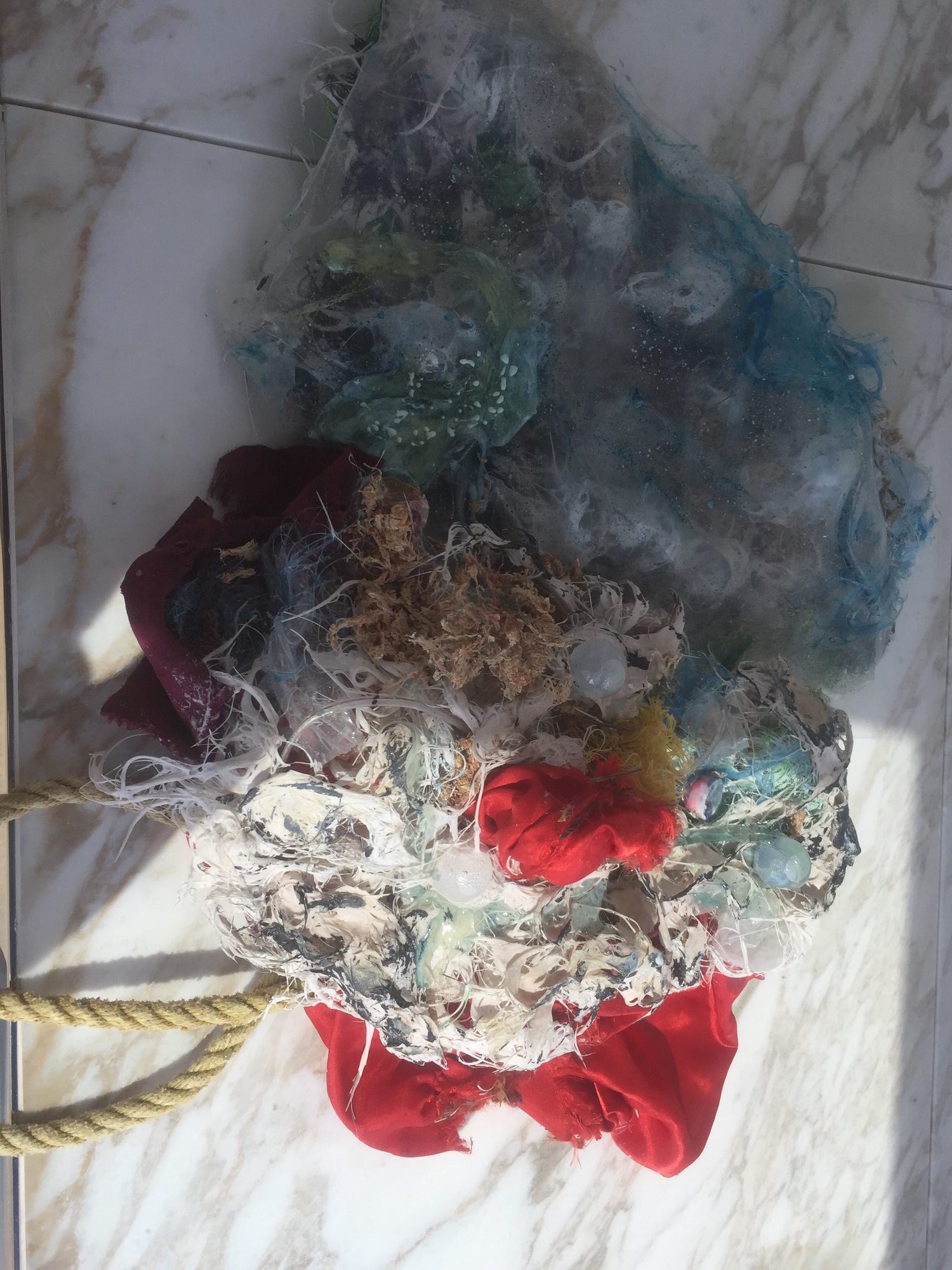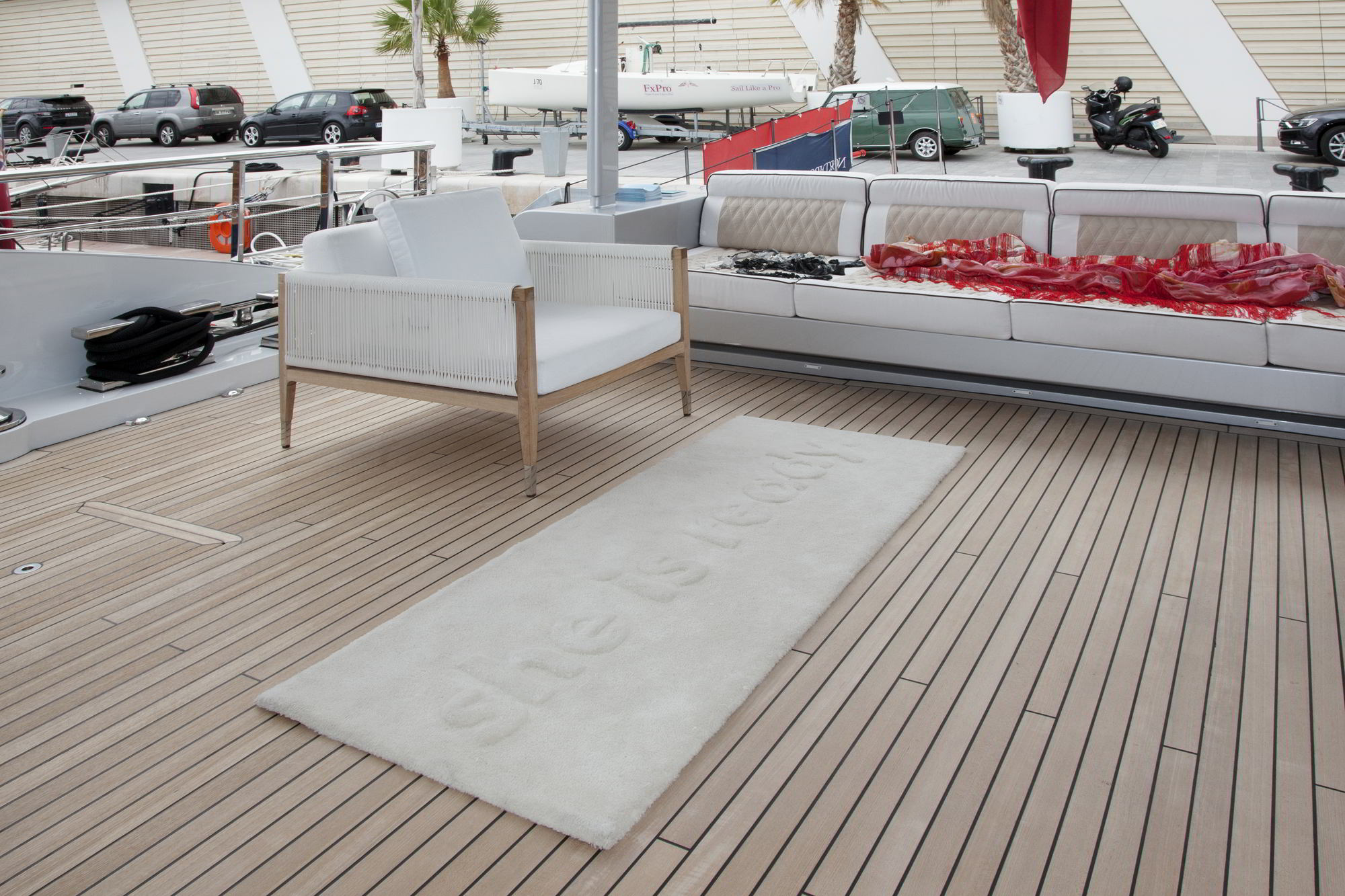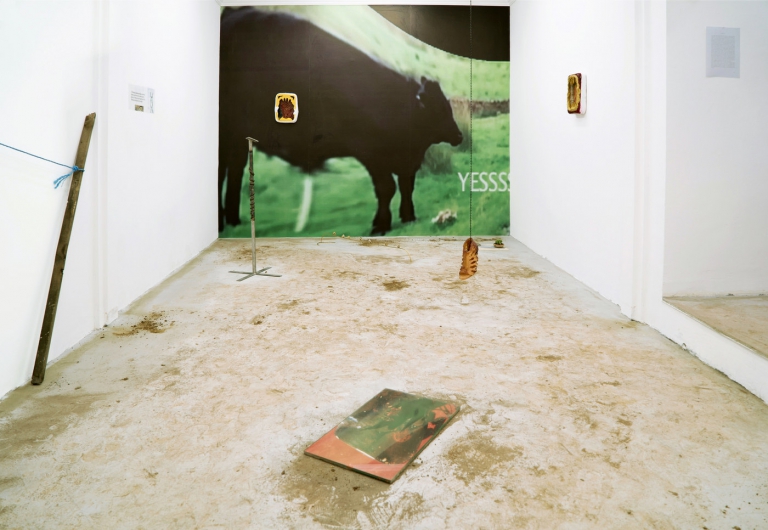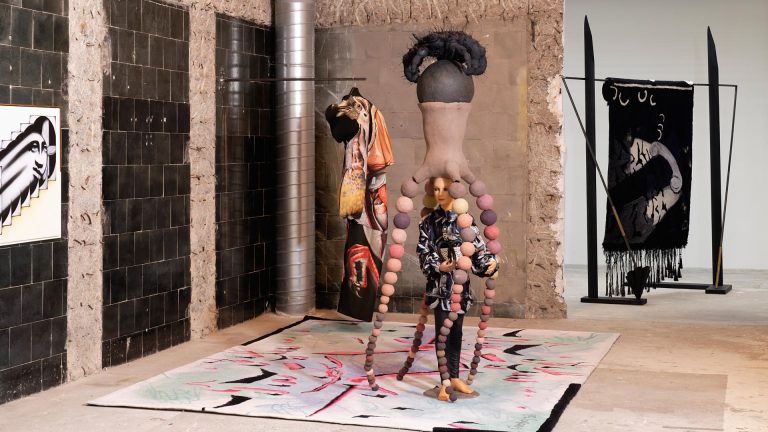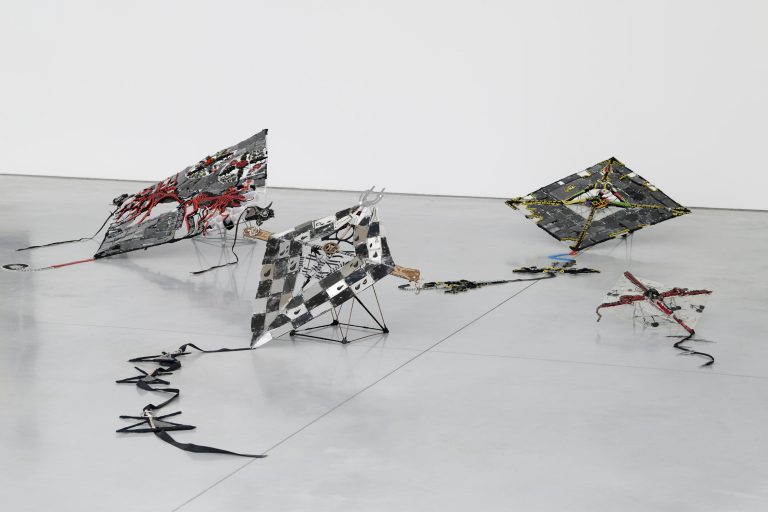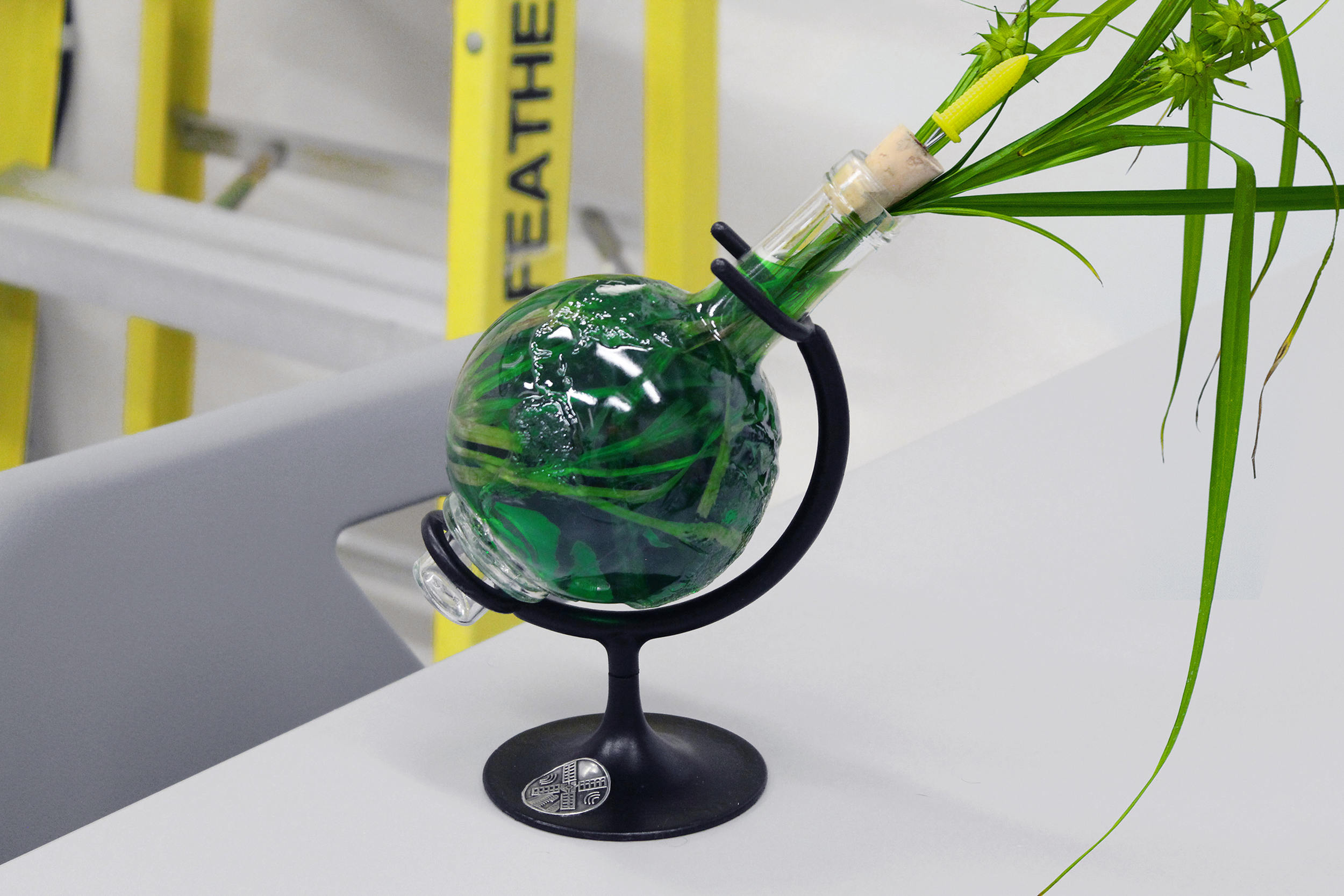Artists: Nils Alix-Tabeling, Lou Cantor (Józefina Chętko and Kolja Gläser), Mimosa Echard, Rebecca Jagoe, Anna Solal, Marian Tubbs, Jala Wahid, Young Girl Reading Group (Dorota Gawęda and Eglė Kulbokaitė)
Exhibition title: Hypersea
Curated by: Juliette Desorgues
Venue: Port Hercule, Monaco
Date: April 26 – 29, 2018
Photography: all images copyright and courtesy of the artists
Watershed pollution, a theory of embodiment, amniotic becomings, disaster, environmental colonialism, how to write, global capital, nutrition, philosophy, birth, rain, animal ethics, evolutionary biology, death, storytelling, bottle water, multinational pharmaceutical corporations, drowning, poetry.[1]
Such are the concerns described by Astrida Neimanis for feminist thinking in today’s neo-liberal world. Reflecting on her concept of ‘hydrofeminism’, the work of eight artists is brought together in dialogue and tension on a yacht moored in the port of Monaco, a site which becomes a prime symbol of today’s complex dystopian conditions.
Water is considered here an entity in and of itself, as well as a metaphor. Water not only largely constitutes our planet, but also our bodies and those of other species that inhabit its surface. Its cyclical flow comes to undermine the Western individualistic view of humanity as an all-permeating species. Our watery bodies are similar to the watery bodies of others that populate this world.[2] We become entangled and enmeshed in a community of bodies, of membrane and flesh, that are also ‘animal, vegetable, geophysical, meteorological, and technological’.[3]
Water, through its constant flow, is considered expansive, pluralistic, relational, and beyond categorisations. It is also viscous, porous, allowing forms of tension and resistance. It becomes a metaphor, engaged with feminist, queer, post-colonial and ecological, presents and futures. Like the cyclical movement of the oceanic tides it ebbs, flows and oozes against the solid shores, against dominant neo-liberal power structures.
Ashes to ashes, water to water
We are all bodies of water[4]
[1] Astrida Neimanis ‘Hydrofeminism: Or, On Becoming a Body of Water’ in Undutiful Daughters: New Directions in Feminist Thought and Practice, ed. Henriette Gunkel, Chrysanthi Nigianni, and Fanny Söderbäck (New York: Palgrave Macmillan, 2012), p. 95
[2] Mark A. S. McMenamin and Dianna L. S. McMenamin, Hypersea: Life on Land (New York: Columbia University Press, 1996)
[3] Astrida Neimanis ‘Hydrofeminism: Or, On Becoming a Body of Water’ in Undutiful Daughters: New Directions in Feminist Thought and Practice, ed. Henriette Gunkel, Chrysanthi Nigianni, and Fanny Söderbäck (New York: Palgrave Macmillan, 2012), p. 96
[4] Ibid., p. 91 and p.1.




















